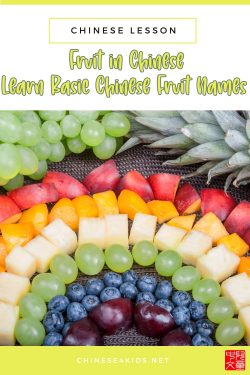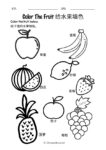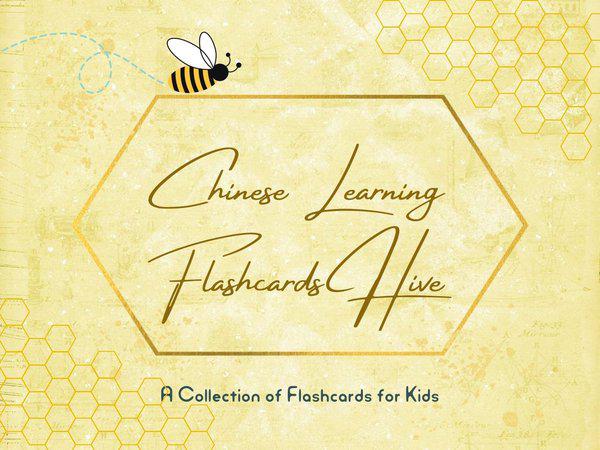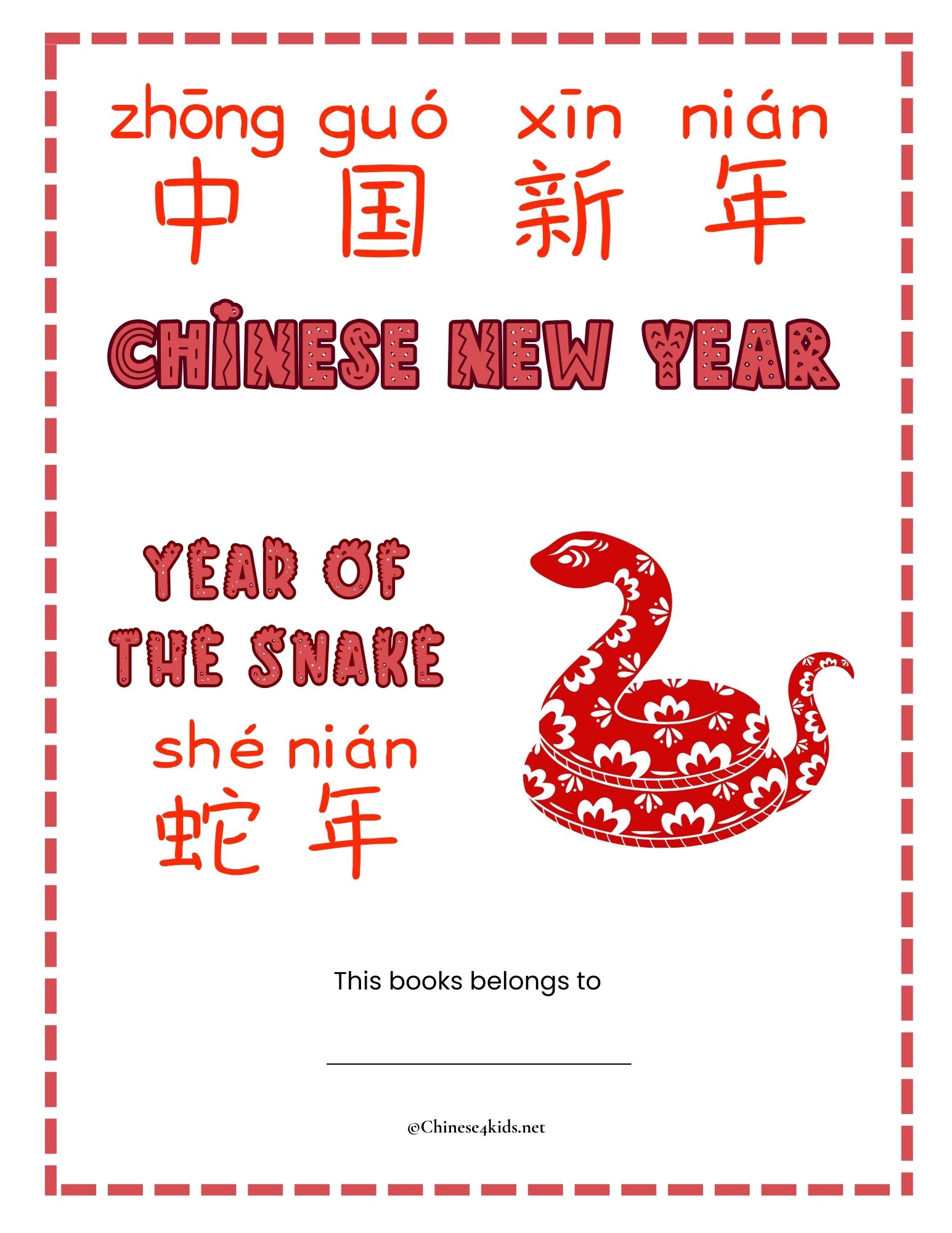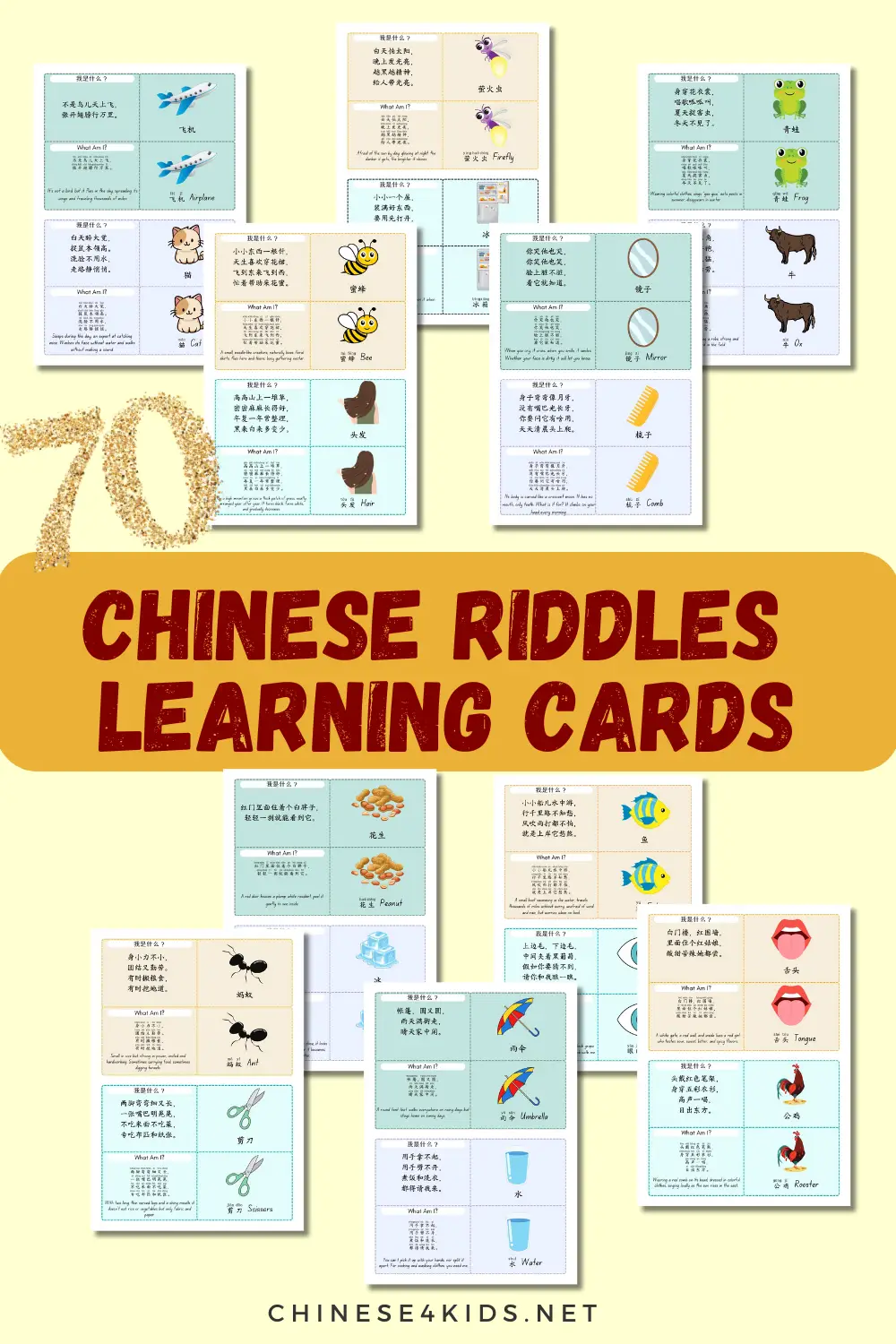
Home » Teach Mandarin Chinese to Kids » Fruit in Chinese – Learn Basic Fruit Names in Chinese
Fruit in Chinese – Learn Basic Fruit Names in Chinese

Learning vocabulary is an essential part of mastering any language, and when it comes to Chinese, fruit is a fundamental category worth exploring. Let’s delve into some basic Chinese fruit vocabulary and fun ways to study them.
Introduction to Basic Fruit Names in Chinese
Fruit is 水果 (shuǐ guǒ). Below are the basic fruit children often see and taste in their daily lives.
苹果 (píng guǒ) – Apple
香蕉 (xiāng jiāo) – Banana
桔子 (jú zi) – Tangerine
葡萄 (pú táo) – Grape
菠萝 (bō luó) – Pineapple
西瓜 (xī guā) – Watermelon
柠檬 (níng méng) – Lemon
草莓 (cǎo méi) – Strawberry
Ways to Study Chinese Fruit Vocabulary
Using Flashcards
Flashcards are perfect to learn fruit vocabulary. Images (esp. pictures) and Chinese names of the fruit help kids establish the connection between fruit and Mandarin name. You can use flashcards to learn the Chinese names, you can also use them to self quiz to reinforce memorization.
Reading
Read children’s books or online articles about fruit in Chinese. Highlight or underline new vocabulary words as you encounter them. My Colorful Fruit and Veggies is a great one where fruit and vegetables are categorised by colors so that kids can learn fruit and color vocabulary at the same time.
Labeling
Label objects around your house with the Chinese names. For example, stick a note saying “苹果” on an apple in the kitchen. You can also put the wooden fruit on a plate and stick notes with their names on them. Another easy way to engage kids is to ask them to put post-it notes with Chinese names for fruit next to the fruit images on a Fruit poster.
Having Conversation Practice
Practice talking about fruit with your children. Ask them to describe the appearance, color, taste, and if they find the fruit yummy (好吃) or yucky (不好吃), or it they like (喜欢) to eat them.
Here are some examples using 好吃, 不好吃,喜欢,不喜欢
好吃 (hǎo chī) – Delicious
这个苹果很好吃。
Zhè gè píng guǒ hěn hǎo chī.
This apple is very delicious.
不好吃 (bù hǎo chī) – Not Delicious
这个柠檬不好吃,太酸了
Zhè gè níng méng bù hǎo chī, tài suān le.
This lemon is not delicious, it’s too sour.
喜欢 (xǐ huān) – Like
她非常喜欢香蕉。
Tā fēi cháng xǐ huān xiāng jiāo.
She really likes bananas.
不喜欢 (bù xǐ huān) – Don’t Like
他不喜欢草莓。
Tā bù xǐ huān cǎo méi.
She doesn’t like strawberries.
Chinese Fruit-themed Worksheets and Activities
Worksheets provide hands-on activities for kids to process the knowledge they just learned. Some easy and activities include:
Color the Fruit: Provide coloring sheets featuring various fruit. Label each fruit with its Chinese name and have learners color them accordingly.
Match Up: Create a worksheet with pictures of fruit on one side and their Chinese names on the other. Students can draw lines to match each fruit with its correct name.
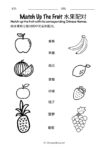
Yummy or Yucky: Present a list of different fruits and ask students to indicate whether they find each fruit “好吃” (hǎo chī – delicious) or “不好吃” (bù hǎo chī – not delicious).
What Fruit Do You Like: Have students write sentences expressing their preferences using phrases like “我喜欢” (wǒ xǐ huān – I like) or “我非常喜欢” (wǒ fēi cháng xǐ huān – I really like).
Want to Teach Your Kids a Lesson of Fruit?
Fruit is one of the lessons inside our Chinese4kids Membership. You’ll get all the resources mentioned above such as lesson plan, flashcards, poster, worksheets, text sheet, etc. Join now to get access to this and many more lessons ready made for you so you can focus on teaching your kids with stress.
Want to have a sample lesson?
Enter your name and email below and it will be delivered directly to your inbox.
If you like the post, share it
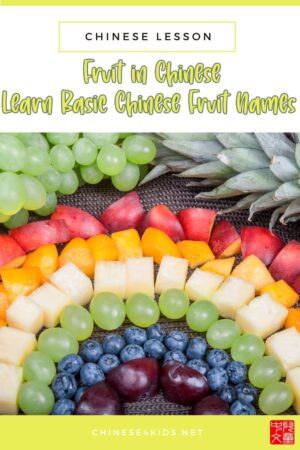
Related Resources:
- Exploring Fruit Chinese Vocabulary
- Fruit Chinese Vocabulary Montessori 3-Part Learning Flashcards with English
- My Chinese Books of Colorful Fruits and Vegetables
- Food Chinese Vocabulary Posters
- Exploring Chinese Measure Words for Food: A Delicious Linguistic AdventureChinese4kids Membership for Teachers and Parents
You May Also Be Interested:
- Chinese4kids Membership – a portal for busy Chinese teachers and parents
- Chinese learning flashcards Hive – a flashcards library that with regular additions of new quality Chinese learning flashcards
- Chinese learning worksheets collection – Also a part of Chinese4kids membership, this collection is for teachers and parents who want to have access to engaging worksheets and activity sheets created for kids learning Mandarin Chinese as an additional language
- Speak Chinese with Kids Course
- Chinese Vocabulary Made Easy Course
Recent Posts
Join Our Membership
Enroll to A Course
Buy An eBOOK
Our Posts
